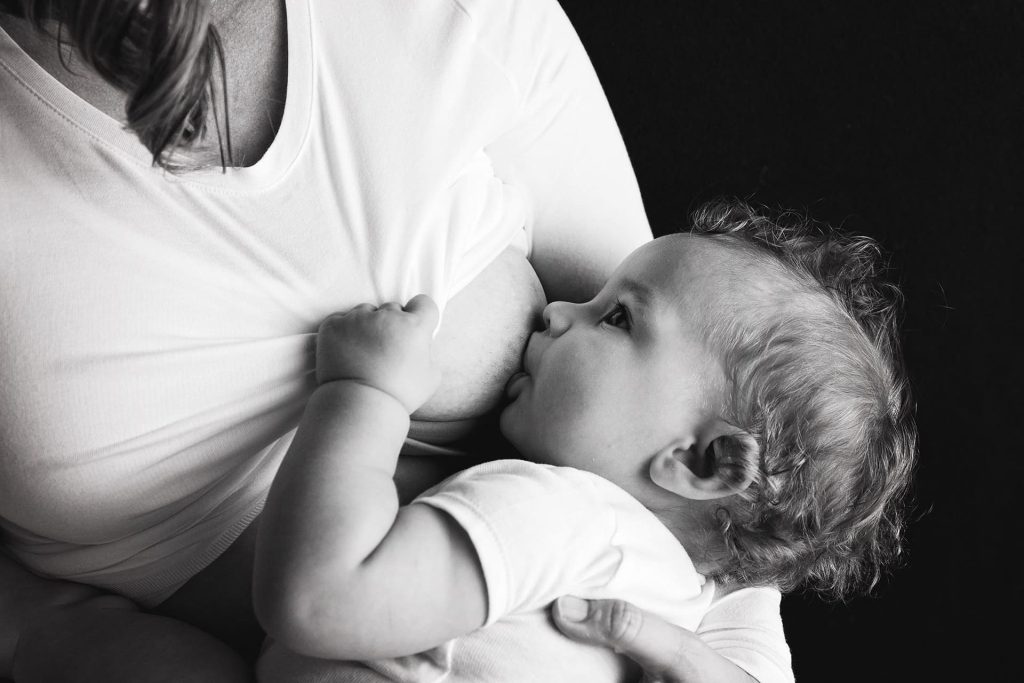How to Breastfeed Your Baby Easier
Are you a new mom trying to guess the best way to breastfeed your Baby? In this post, I want to share some tips to make it easier for you. First and foremost, let’s talk about how to know if you’ll be able to breastfeed.
The best way is to ask your doctor. Certain health conditions make breastfeeding more complex, and your doctor can tell you whether or not it’s safe for you to do so.
Most women imagine that breastfeeding will happen naturally. After all, women have been breastfeeding their babies since the beginning of humankind. Babies are hungry, and mothers have milk: What partnership could be more perfect? As it turns out, there’s much to know about breastfeeding, and most new mothers are clueless about what to expect.
More and more people live away from their extended families so knowledge from mothers and aunts is not quickly available. It’s best to learn about how to breastfeed so that you can have a successful breastfeeding experience.
Try to:
• get one or more books about breastfeeding before the Baby is born,
• go to a How To Breastfeed class or
• attend a childbirth class, including a session on breastfeeding.
Preparation for breastfeeding
If it turns out that breastfeeding is right for you, there are a few things that will help make the process easier:
1. Prepare your nipples for breastfeeding by massaging them gently with coconut oil before giving birth. This helps soften the nipples so they don’t hurt as much when your little one latches on! It also makes them more flexible, which makes latching easier for both of you.
2. Don’t forget to eat foods rich in nutrients like calcium and vitamin D! These will help produce breast milk faster and ensure that it’s healthy for your Baby.
3. Eat foods rich in protein like salmon or eggs—these will give energy back to your body after childbirth so that you can keep up with all those feedings!
How to Breastfeed easier: Holding Your Baby
This may seem trivial, but once you’ve read the options below, you will know it is not trivial. There are at least five ways to hold your Baby while he nurses, and it is good to be familiar with three or more positions. Why is this necessary?
- Once you’ve started breastfeeding, your nipples will soon feel sore. Holding your Baby in different positions will prevent the same part of your nipple being worn-down.
- Feeding your Baby using different holds will also help empty-out all the milk ducts (emptying out helps prevent breast infections).
- And finally, holding your Baby in different positions will allow parts of your arms, back, and body to rest. Remember, a newborn can nurse 10 times a day so changing positions may circumvent stiffness.
1. Cradle Hold
The cradle hold is probably the most popular way to hold your Baby while he drinks from your breast. Most photos of mother & baby pairs will show the Baby being held with the cradle hold.
Here, your Baby’s head is supported by the crook of your right elbow as he nurses from the right breast.
If your baby is heavy, your left arm may be under your right arm for extra support. If you are trying to encourage let down or empty plugged ducts, then your left hand can massage the right breast as the Baby is nursing. If you’re an expert, your left hand is free to hold a book while reading. The key here is that right arm will support the Baby when you are feeding from the right breast.
2. Cross Cradle Hold (Crossover Hold)
The cross cradle hold is especially useful for young infants who have not figured out how to breastfeed yet. When feeding on the right breast, the weight of the Baby will be supported by the left arm. The left hand will hold the Baby’s head and guide it towards the right breast. It’s called the cross cradle because you use your left arm to hold the Baby while he nurses on the right breast.
To feed from the left breast, you will hold the Baby with your right arm and the right hand will position the Baby’s head onto the left breast. Again, the free hand will either hold & position the breast or massage the breast to encourage let-down.
3. Football Hold
As incredible as it may sound, this Hold requires that you hold your Baby like a football. You will clasp Baby’s torso under your right armpit to feed on the right breast. His legs will not be visible since they will extend behind you.
Use your right hand to position Baby’s head to your right breast. To feed from the left breast, hold Baby’s torso under your left armpit and use your left hand to position Baby’s head onto your left breast. I often forget to use the football hold because I rarely see this position. But the football hold works and is a lifesaver when your nipples are exhausted. The football hold is recommended for women who have had a C-section because the Baby does not lie across your belly.
4. Side Lying Position
This method works best after you have established good breastfeeding routine – in other words, breastfeeding is working well and you & Baby are a team. Like a firm mattress, you will lie down on a soft but firm surface to feed on the right breast. Lie so that you are on your right side and your right breast is closest to the mattress. Place Baby beside you so that his body and face is pointed towards you (belly to belly, face to face). Bring Baby closer and allow him to latch on to the breast that is closest to the mattress (in this case, the right breast).
To feed on the left side, lie on your left with the left breast closest to the mattress. Place Baby beside you so that his face and body is facing towards you. Moms who have had a C-section can use this Hold since it allows her feed Baby while resting in bed. This Hold is excellent for middle-of-the-night feedings, too. You can feed your Baby but remain lying down. Moms love this Hold because it gives them an excuse to lie down in the middle of the day to feed the Baby.
5. Australian Hold
This Hold is sometimes recommended when a mother has too much milk or the flow of milk is too fast. There are two ways to do the Australian Hold
- Reclined position: Lie in a reclined position or lie flat on your back and place Baby on top of you facing towards you. Position Baby so his head is level with your breast and start breastfeeding.
- Sitting up: Your Baby sits on your lap, facing you and straddling one of your legs. You hold the back of the Baby’s neck to support his head while he latches-on and drinks. Use pillows if the Baby is not tall enough to reach your breasts. Because the Baby is sitting up, gravity helps the milk find its way down the Baby’s throat. Also because Baby’s mouth is level with your breast, the milk does not come gushing down as quickly.
Because you are reclined backwards or lying down, gravity will help your milk come out slower and there will be less chances of Baby gagging on excess milk.
Tips and tricks to help you successfully breastfeed your little one
First-time moms are often concerned about how to breastfeed their Baby, so here you have some tips and tricks to help you successfully breastfeed your little one:
1. Relax and take your time. Try to relax, take deep breaths, and focus on the feeling of your baby nursing. This will help you be patient with your newborn as he learns how to latch onto the breast.
2. Make sure you have good posture while breastfeeding so that it’s comfortable for both of you. You can also try sitting up with pillows or leaning against a wall for support if needed.
3. Get comfortable with the breastfeeding positions that are most comfortable for you and your Baby by experimenting with different positions before giving birth! Some moms like lying down with their babies at their sides; others prefer sitting upright in a rocking chair or recliner; others find that lying on their backs works best for them because it helps reduce pressure on their tummy after childbirth!
4. Don’t give up if it takes some time for things to get going! Most moms find that within a few days after birth, they start feeling more comfortable with breastfeeding—and eventually, they’ll be able to feed their babies without discomfort!
5. If you’re having problems with sore nipples, try using breast pads to protect your tender tissue. You can also use cold compresses for the first few days after birth if it helps soothe your soreness.



